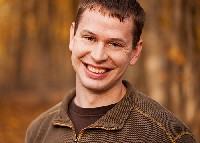 |
 |
Have we entered the era of the 1 year sequencer release cycle? *Updated*
Tuesday, January 13, 2015
Illumina's $1000 Genome*
Wednesday, January 15, 2014
A coming of age for PacBio and long read sequencing? #AGBT13
Saturday, February 23, 2013
Next Generation Sequencing rapidly moves from the bench to the bedside #AGBT13
Friday, February 22, 2013
#AGBT day one talks and observations: WES/WGS, kissing snails, Poo bacteria sequencing
Wednesday, February 20, 2013
Got fetal DNA on the brain?
Friday, September 28, 2012
Memes about 'junk DNA' miss the mark on paradigm shifting science
Friday, September 7, 2012
So, you've dropped a cryovial or lost a sample box in your liquid nitrogen container...now what?
Thursday, August 16, 2012
A peril of "Open" science: Premature reporting on the death of #ArsenicLife
Thursday, February 2, 2012
Antineoplastons? You gotta be kidding me!
Thursday, October 27, 2011
YouTube: Just a (PhD) Dream
Thursday, October 27, 2011
Slides - From the Bench to the Blogosphere: Why every lab should be writing a science blog
Wednesday, October 19, 2011
Fact Checking AARP: Why soundbytes about shrimp on treadmills and pickle technology are misleading
Monday, October 17, 2011
MHV68: Mouse herpes, not mouth herpes, but just as important
Monday, October 17, 2011
@DonorsChoose update: Pictures of the materials we bought being used!!
Friday, October 14, 2011
Is this supposed to be a feature, @NPGnews ?
Tuesday, October 4, 2011
A dose of batshit crazy: Bachmann would drill in the everglades if elected president
Monday, August 29, 2011
A true day in lab
Wednesday, August 10, 2011
A day in the lab...
Monday, August 8, 2011
University of Iowa holds Science Writing Symposium
Tuesday, April 26, 2011
Sonication success??
Monday, April 18, 2011
Circle of life
Thursday, March 17, 2011
Curing a plague: Cryptocaryon irritans
Wednesday, March 9, 2011
Video: First new fish in 6 months!!
Wednesday, March 2, 2011
The first step is the most important
Thursday, December 30, 2010
Have we really found a stem cell cure for HIV?
Wednesday, December 15, 2010
This paper saved my graduate career
Tuesday, December 14, 2010
Valium or Sex: How do you like your science promotion
Tuesday, November 23, 2010
A wedding pic.
Tuesday, November 16, 2010
To rule by terror
Tuesday, November 9, 2010
Summary Feed: What I would be doing if I wasn't doing science
Wednesday, October 6, 2010
"You have more Hobbies than anyone I know"
Tuesday, October 5, 2010
Hiccupping Hubris
Wednesday, September 22, 2010
A death in the family :(
Monday, September 20, 2010
The new lab fish!
Friday, September 10, 2010
What I wish I knew...Before applying to graduate school
Tuesday, September 7, 2010
Stopping viruses by targeting human proteins
Tuesday, September 7, 2010
 |
 |
 |
 |
Brian Krueger, PhD
Columbia University Medical Center
New York NY USA
Brian Krueger is the owner, creator and coder of LabSpaces by night and Next Generation Sequencer by day. He is currently the Director of Genomic Analysis and Technical Operations for the Institute for Genomic Medicine at Columbia University Medical Center. In his blog you will find articles about technology, molecular biology, and editorial comments on the current state of science on the internet.
My posts are presented as opinion and commentary and do not represent the views of LabSpaces Productions, LLC, my employer, or my educational institution.
Please wait while my tweets load 
 |
 |
youtube sequencing genetics technology conference wedding pictures not science contest science promotion outreach internet cheerleaders rock stars lab science tips and tricks chip-seq science politics herpesviruses
 |
 |
 |
 |
How AAAS and Science magazine really feel about sexual harassment cases in science
Today I dusted off my luggage and headed down to the annual Advances in Genome Biology and Technology meeting in Marco Island, FL. Historically, this meeting has been the Detroit Auto Show of Genomics where companies and labs release their beautiful shiny new products and methodologies. In past years, attendees were showered with fireworks displays and epic swag bags. The tone this year is palpably more mutated. One only has to point to the display banners located on the AGBT presenter stage for evidence of this: banners for Bronze and Silver Sponsors appear to hang waiting for accompaniment by Gold and Platinum brethren…there’s even space allocated for them.
Despite the tightened biotech purse strings, the event appears from the outset to be extremely well organized. There could be a few more power outlets for those of us carrying a small fortune in lithium powered devices, but I guess I’ll manage. And of course there’s no live streaming or any form of web enabled anything…but I can gripe about that in a long winded and whiny post next week.
The evening opened with a brief introduction with a description of some new meeting changes. This is the biggest AGBT yet with over 800 attendees. A new abstract selection committee was created so that AGBT could expand its horizons and invite more speakers from varied disciplines.
The first session was titled Genomic Studies I and opened with a talk by Eric Boerwinkle of the University of Texas. He spoke about how the field has relatively rapidly transitioned from an era of Genome Wide Association based Studies to using Whole Genome and Whole Exome techniques to get a better understanding of how genetic variation can be used to explain common chronic diseases in the broader population. One of the highlights from the talk was that he and the CHARGE consortium found that in sequencing whole genomes, they detected 25 million variants and only 50% had been previously described. This is interesting, but also shows us how much work we have ahead of us because there is still a lot of work on the bioinformatics and functional genomics fronts to try to distinguish which of these variants are signal and which are noise. Boerwinkle made a great case for WGS/WES moving forward and highlighted one of my biggest gripes about this field which is that each sequencing house really has its own proprietary pipeline, from sample prep to analysis, and these things need to be better shared to enhance collaboration and data sharing.
The second talk was by Leonid Moroz of the University of Florida who presented his research on the epigenetics of memory formation. I really enjoyed Moroz’s story-telling style and I wish more scientists would learn how to package their talks into easily digestible stories (off my soapbox…). Moroz began by asking us how we remember our first kiss? How is that data stored in our brain when proteins in neurons turn over on average every 24 hours? Where is that information stored? I think Moroz may be getting a little ahead of himself here, but he went on to show that if you look at single neurons, the RNA expressed in these neurons is completely different so potentially every neuron could have its own program. To test this hypothesis he stimulated massive 1.1mm sea slug neurons with Serotonin or Nitric Oxide and showed on a single cell basis that there were detectable changes in the level of DNA methylation. He proposed that the loss of DNA methylation may be important for both DNA expression regulation and thus memory formation. It will be interesting to see what comes from similar single neuron studies in human tissues.
The third talk was from Ross Hardison of Penn State who was looking at how we could use genomics to find Cis Regulatory Elements in the DNA. Basically as Cis regulatory element is a stretch of DNA or a specific DNA sequence that is involved in regulating gene expression. We know of a few important elements like GATA and TATA, but we think that the majority of cis regulatory elements are more loosely defined and lack a strict consensus sequence. Now, many studies have been done to find what proteins bind to specific DNA regions, but Hardison took an evolutionary biology approach to the problem by trying to use evolutionarily conserved regions of the genome to help find conserved regions near genes that might be important for gene regulation. This kind of work is important because it helps us to understand how changes to the DNA that do not affect coding sequences can play an important role in which genes are expressed in a given cell.
The final talk of the night was from Barbara Methe of the Venter Institute who gave a metagenomics talk about the human microbiome. I’ll admit, I skipped this talk to make my way down to the “illumina users” Session so I don’t have any notes of my own about Methe’s work.
The “illumina users” session was really as expected. Illumina has been saying for some time that they’re planning on expanding MiSeqs and HiSeqs both in read length and cluster density. One of the major improvements will be that the MiSeq can output 16GB which is about enough for 6 fold coverage of a human genome. The two main “science” (I’m using this term loosely, maybe promotional is more fitting) talks were on applications of illumina’s expanded longer run technologies on the MiSeq and new HiSeq 2500. Here, longer runs are defined as 2x400bp runs that can be used to generate ~750bp reads. (Apparently the cool Moleculo talk about their 1-10KB read technology will be later this week.) These are great for sequencing through long repeat regions of the human genome or unequivocally determining distinct species of bacteria in an ecosystem composed of raw sewage. I really wish these talks delved into more of the science, and I couldn’t help but feel that the illumina reps in attendence were going to put padlocks on the doors and force us to sign up for a timeshare on illumina Island (BaseSpace?) before they’d let us leave.
All in all, the first day of AGBT was a great introduction and I’m really looking forward to the methodology and clinical sequencing talks later in the week. I’ll be back tomorrow with another wrap up of my favorite talks and observations!
This post has been viewed: 13177 time(s)
 |
 |
Thanks for a nice summary of the day 1 plenary talks! A bit more depth and thought than Twitter allows is always appreciated!
Dan, I totally agree. I wish more attendees would participate in the global conversation. Some day these things might even be live streamed for everyone to see and comment. I guess for now people are stuck with coverage from the early adopters ;)
 |
 |
 |
 |









Jaeson, that's not true at most places. Top tier, sure, but 1100+ should get you past the first filter of most PhD programs in the sciences. . . .Read More
All I can say is that GRE's really do matter at the University of California....I had amazing grades, as well as a Master's degree with stellar grades, government scholarships, publication, confere. . .Read More
Hi Brian, I am certainly interested in both continuity and accuracy of PacBio sequencing. However, I no longer fear the 15% error rate like I first did, because we have more-or-less worked . . .Read More
Great stuff Jeremy! You bring up good points about gaps and bioinformatics. Despite the advances in technology, there is a lot of extra work that goes into assembling a de novo genome on the ba. . .Read More
Brian,I don't know why shatz doesn't appear to be concerned about the accuracy of Pacbio for plant applications. You would have to ask him. We operate in different spaces- shatz is concerned a. . .Read More